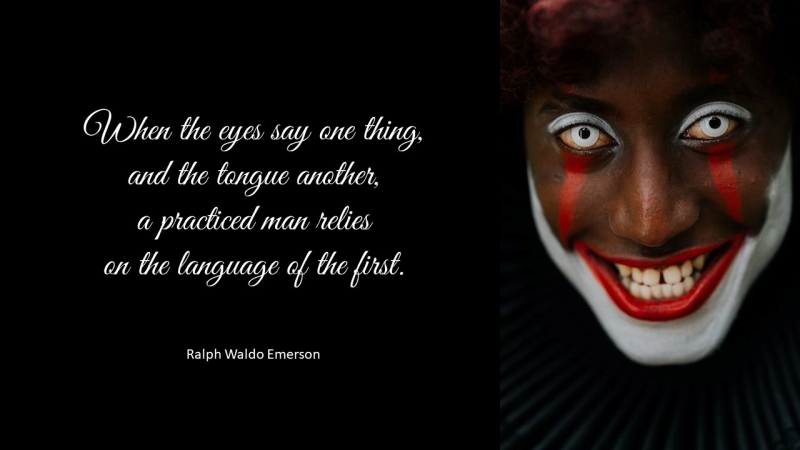LET US EMBARK ON AN ENLIGHTENING EXPLORATION INTO BODY LANGUAGE MASTERY. In this captivating journey, we will uncover the profound influence of nonverbal communication, equipping you with the tools to exude confidence, influence others, and foster meaningful connections. Let us dive into this transformative expedition together, unlocking the secrets that lie within the art of body language.
![]()
The Intricacies of Nonverbal Communication
Imagine a captivating performance unfolding before your eyes, where every movement, gesture, and expression harmoniously blends to create a symphony of visual communication. Body language possesses a unique elegance that allows it to convey powerful messages without uttering a single word. Join us as we embark on a quest to unravel the secrets of becoming a skilled conductor of this nonverbal symphony.
![]()
Mastering Posture: Portraying Confidence and Approachability
Your posture is a reflection of your confidence and presence. Stand tall, shoulders back, and head held high, exuding confidence and openness. Your posture sets the stage for others to notice and value your presence, creating an inviting atmosphere.
The Magic of Smiles: A Universal Language of Warmth
A genuine smile transcends cultural and language barriers, radiating warmth and friendliness. Let your smile illuminate the world and witness the enchanting reactions it elicits.
The Power of Eye Contact: Fostering Deep Connections
Maintaining sincere eye contact is crucial for building meaningful connections. It demonstrates attentiveness, honesty, and respect. Your eyes are windows to your inner self, authentically conveying your intentions.
![]()
The Artistry of Gestures and Movements
Just like a skilled artist wields brushes to create awe-inspiring masterpieces, you can use gestures and movements as your artistic tools, vividly expressing your thoughts and emotions. Let us explore the intricacies of this nonverbal language.
Hand Gestures: Expressing without Words
Allow your hands to naturally express your emotions, emphasizing key moments, exuding enthusiasm, and enhancing message clarity. Be mindful of the size and speed of your gestures, ensuring they align with the tone and context of the conversation.
Mirroring: Building Empathy through Nonverbal Synchrony
Mirroring is an intricate display of empathy, where you subtly mimic the gestures and movements of the person you interact with. This fosters rapport and builds trust, leading to deeper connections.
Personal Space and Proximity: The Dance of Boundaries
Respect personal space to convey an understanding of boundaries. Invading someone’s space can cause discomfort, while excessive distance may lead to a sense of detachment. Find a graceful balance that promotes closeness and comfort.
![]()
Facial Expressions: The Canvas of Emotion
Your face is a canvas that vividly portrays various emotions and intentions. Let us explore the intricacies of facial expressions, enabling you to communicate authenticity and understanding.
Microexpressions: Revealing True Emotions
Pay attention to fleeting microexpressions that unveil authentic emotions. Keenly observing these subtle cues, you can respond empathetically, demonstrating a deep understanding of others’ thoughts and feelings.
Eye Expressions: Gateway to Emotional States
Your eyes possess a remarkable ability to convey a multitude of emotions. Utilize eye expressions to communicate empathy, genuine interest, and sincerity. Their shimmering gaze captivates hearts and builds trust like no other form of communication.
Active Listening: Engaging Your Face
Engage your face in active listening by using facial expressions to show attentiveness and interest while someone is speaking. Subtle nods convey agreement, raised eyebrows indicate surprise, and maintaining an open expression signifies receptiveness. Active listening demonstrates your presence and understanding, fostering a sense of value and comprehension in the other person.
![]()
Aligning Verbal and Nonverbal Expressions
Striking a balance between verbal and nonverbal cues is critical in effective communication. The interplay between spoken words and body language significantly impacts the clarity and impact of our messages. Let us explore strategies to align our verbal and nonverbal expressions seamlessly.
Consistency: The Key to Persuasive Communication
The foundation of effective communication is consistency. Pay close attention to the alignment between your words, gestures, expressions, and tone of voice. When these elements harmonize, your communication becomes more persuasive and authentic.
Inflection: Adding Emotion to Your Voice
Inflection allows you to infuse your words with appropriate emotions. Modulate your voice, adjusting volume, speed, and tone to convey enthusiasm, empathy, or confidence. Mastering the art of intentional voice modulation enhances your ability to express and communicate emotions effectively.
The Power of Pauses: Embracing Silence
Nonverbal communication relies heavily on silence. Strategically placed pauses can emphasize important points, create anticipation, and lend authority to your message. Harness the power of purposeful pauses to convey profound messages through nonverbal means.
![]()
Cultivating Empathy and Intuition
Understanding your body language is crucial, but developing empathy and intuition enables you to decipher the subtle nonverbal cues of others. Let us explore techniques to nurture these invaluable skills.
Enhance Your Listening Skills: Beyond Verbal Communication
Sharpen your ability to perceive not just verbal communication but also the subtle changes in body language, vocal intonation, and facial expressions displayed by others. This practice allows you to gain profound insights into their emotional state and respond with genuine empathy.
Trust Your Intuition: Decoding Hidden Messages
Intuition plays a vital role in interpreting body language. Trust your instincts to detect subtle cues that may escape conscious awareness. Cultivate the skill of deciphering nonverbal messages and relying on your gut feelings.
Embrace Adaptability: Understanding Individual Differences
Recognize that body language is influenced by cultural backgrounds and personal experiences. Embrace adaptability and open-mindedness, allowing your body language to adjust accordingly to create a comfortable and understanding environment.
![]()
Embracing Personal Growth: Practice, Feedback, and Beyond
To excel in body language mastery, commit yourself to continuous practice, seek constructive feedback, and foster personal growth. Here are some valuable insights to enrich your transformative journey:
Mirror Reflections: Practice with Self-Observation
Use a mirror to observe and practice your body language nuances. Pay attention to how postures, gestures, and expressions influence the impression you make. Refine and align your body language until it authentically represents your inner self.
Seek Feedback: The Wisdom of Others
Solicit feedback from trusted individuals such as friends, colleagues, or mentors. Their unique perspectives can reveal subtle nuances in your body language, aiding you in honing your skills further.
Embrace Growth Opportunities: Stepping out of Comfort Zones
Engage in activities that challenge your body language aptitude, such as joining public speaking clubs, attending networking events, or taking leadership roles. Applying your knowledge in real-world scenarios facilitates growth and development.
![]()
Conclusion
In conclusion, nonverbal communication greatly enhances personal and professional connections. By cultivating self-awareness of your body language, interpreting nonverbal cues, and aligning verbal and nonverbal expressions, you can establish profound relationships, foster trust, and convey your thoughts and emotions with unwavering assurance. As you embark on this captivating journey, allow the eloquence of your body language to weave a mesmerizing symphony, opening up a world of boundless possibilities.


